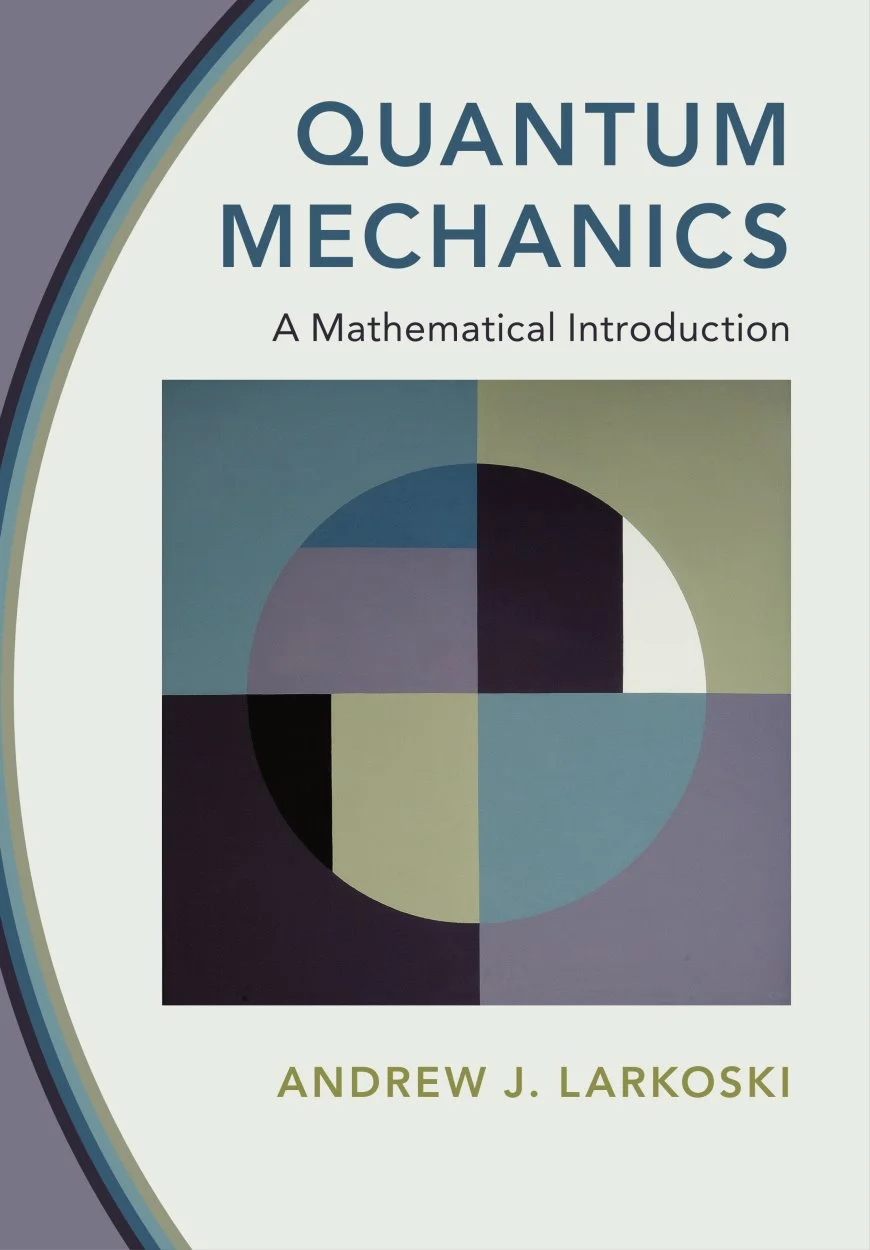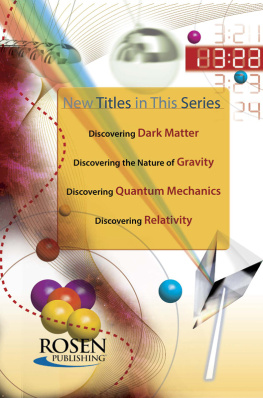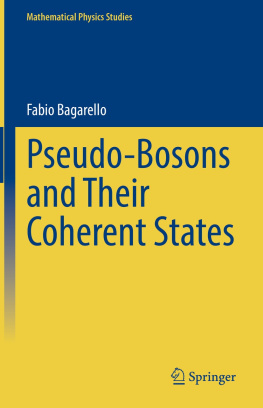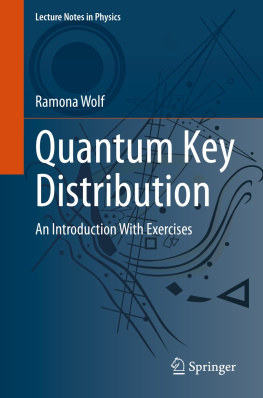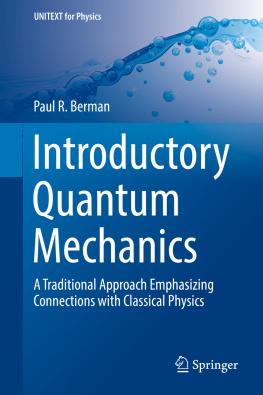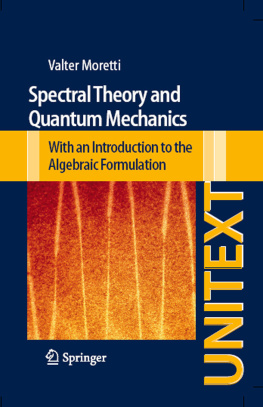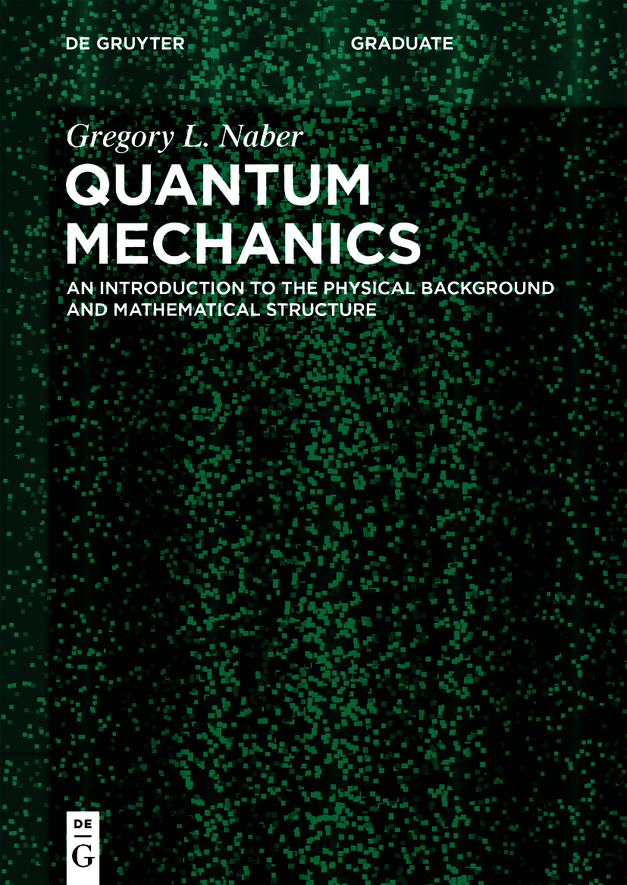De Gruyter Textbook
ISBN 9783110751611
e-ISBN (PDF) 9783110751949
e-ISBN (EPUB) 9783110752045
Bibliographic information published by the Deutsche Nationalbibliothek
The Deutsche Nationalbibliothek lists this publication in the Deutsche Nationalbibliografie; detailed bibliographic data are available on the Internet at http://dnb.dnb.de.
2021 Walter de Gruyter GmbH, Berlin/Boston
This is for all of the young ones in my life: Amber, Emily, Garrett, Gracie, Lacey, Maya, Miles, Phoenix and Vinnie
Preface
The goal here is to provide an introduction to the physical and mathematical foundations of quantum mechanics. It is addressed to those who have been trained in modern mathematics and whose background in physics may not extend much beyond F=mA , but for whom the following sorts of questions require more than a perfunctory response. What are the physical phenomena that forced physicists into such a radical re-evaluation of the very beautiful and quite successful ideas bequeathed to them by the founding fathers of classical physics? Why did this re-evaluation culminate in a view of the world that is probabilistic and formulated in terms of Hilbert spaces and self-adjoint operators? Where did the Planck constant come from? What are the basic assumptions of quantum mechanics? Are they consistent? What motivated them? What objections might be raised to them? Where did the Heisenberg algebra come from? What motivated Feynman to introduce his path integral? Is it really an integral? Does it admit a rigorous mathematical definition? Why does one distinguish two types of particles in quantum mechanics (bosons and fermions)? Why and how are they treated differently? In what sense does supersymmetry provide a more unified picture of the two types? One need not know the answers to all of these questions in order to study the mathematical formalism of quantum mechanics, but for those who would like to know we will try to provide some answers or, at least, some food for thought. As to the mathematical formalism itself, we will provide careful, detailed and rigorous treatments of just a few of the simplest and most fundamental systems with which quantum mechanics deals in the hope that this will lay the foundation for a deeper study of the physical applications to be found in the literature.
In a sense, the harmonic oscillator is to physics what the set of natural numbers is to mathematics. It is a simple, almost trivial system, but one which conceals much subtlety and beauty and from which a great deal of what is of interest in the subject evolves. We will follow some of this evolution from the simple classical problem through its canonical quantization and path integral to its fermionic and supersymmetric versions and will pause along the way to consider the tools and thought processes employed by physicists to construct their theoretical models. We will make a concerted effort to rephrase, whenever possible, these tools and thought processes in a form more congenial to those trained in modern mathematics, for this is our intended audience. However, we will also make a concerted effort to discourage the view that physics can simply be translated into mathematics. We take seriously Einsteins dictum that ... as far as the propositions of mathematics refer to reality, they are not certain; and, as far as they are certain, they do not refer to reality. Our very modest goal is to alleviate, in some small measure, the stress that generally accompanies the mathematically inclined when they stray into the very foreign world of bosons and fermions, Lagrangians and path integrals, nonexistent measures on infinite-dimensional spaces and supersymmetry. The best we can offer to the mathematician interested in dipping his or her toes into the murky waters of physics is an honest attempt, at each stage, to clearly distinguish those items that are accessible to mathematical definition and proof from those that are not, and an honest admission that the rigor we so earnestly strive for can do violence to the intentions of the physicists. Elegance and brevity, while admirable traits, will play very little role here; the goal is communication and if we feel that this is best accomplished by an ugly argument in coordinates, or a treatment that is perversely elementary, then so be it.
In broad strokes, here is the plan. We begin by briefly reviewing the part of the classical story that we all learn as undergraduates (masses oscillating on springs and simple harmonic motion) and then say a few words about why this rather special and seemingly uninteresting problem is so important (Chapter ). This formalism is quite unlike anything in classical physics and evolved historically over many years in a highly nonlinear fashion from the brilliant insights and inspired guesswork of its creators. In the end we are forced to concede that the conceptual apparatus that has evolved in our species over eons in response to the macroscopic world in which we live is simply not adequate for the description of the microscopic, quantum world, which operates according to entirely different rules. For example, the intuitively all too familiar distinction between a particle and a wave disappears and we are required to regard these as simply dual aspects of the same underlying physical object. But if familiar, classical concepts fail us, there is still mathematics, which does not require that the objects with which it deals correspond to any ready-made, familiar concepts. The formalism of quantum mechanics provides a mathematical, not a conceptual model of what goes on in the world, but the model has proved to be remarkably successful. In this world the states of a physical system are represented by elements of a Hilbert space and the things we observe (measure) are represented by self-adjoint operators on this Hilbert space. We will not pretend that this formalism can be deduced logically from a few simple physical principles, for it cannot. However, by taking a very general view of what constitutes a mathematical model for a physical system, it is possible to argue that, in hindsight at least, the formalism has a certain element of naturalness to it and we will attempt to make this argument.
Even so, to do justice to the formalism, both physically and mathematically, requires considerable preparation. Section describes these algebraic structures in more detail as well as the problem of representing them as self-adjoint operators on a Hilbert space. The famous GroenewoldVan Hove theorem, which restricts the extent to which this can be done, is also discussed.
With the formalism of quantum mechanics in hand one can consider the problem of quantizing a classical mechanical system such as the harmonic oscillator, that is, constructing a quantum mechanical model that reflects the essential features of the classical system. For instance, a diatomic molecule is very much like a mass on a spring, but, because of its size, it behaves very differently and requires a quantum mechanical treatment. Just what these essential features are, how they are to be described classically and how they are to be reflected in the quantum model are issues that we will have to discuss. Many schemes for arriving at such a quantum model for a classical system have been proposed. We will consider only two and will apply them only to the free particle and the harmonic oscillator. Canonical quantization (Chapter ).
Canonical quantization leads to a rather algebraic view of the quantization process and suggests certain variants of the quantum harmonic oscillator which, although they are legitimate and meaningful quantum systems, cannot be regarded as the quantization of any classical system. These are the so-called


